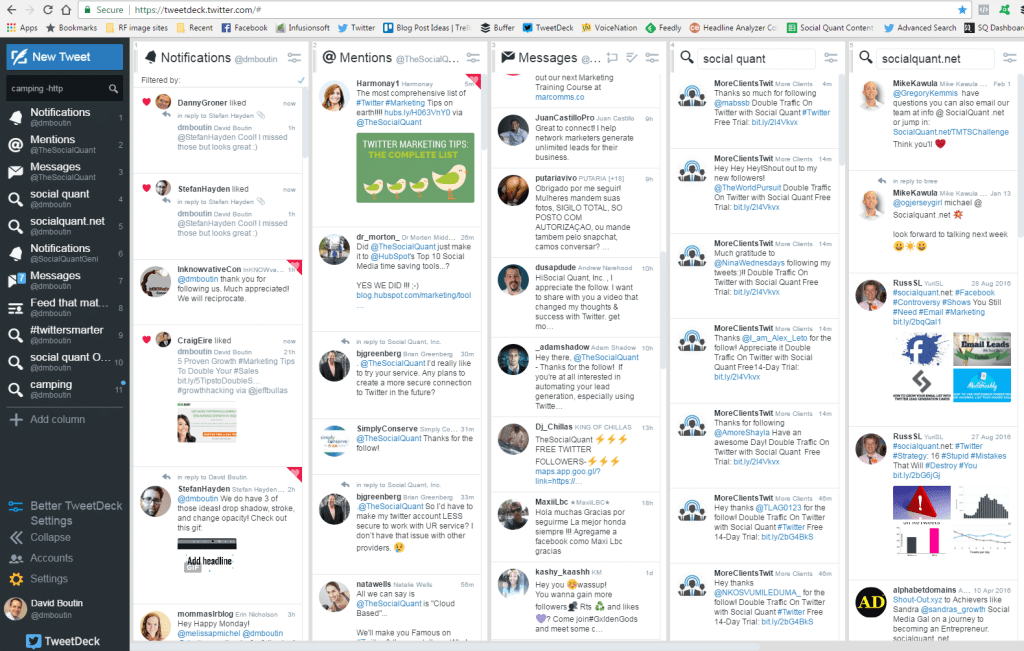So — you’ve probably been reading up on social selling, digital selling or whatever you want to call it. You know that it can completely reshape your business for the better. You’ve seen the case studies and reports from social sellers that show how much of an impact the strategy has managed to have on their business and want the same for yourself.
But how do you actually get started with social selling? If you don’t have any experience in social selling, it can seem daunting. There are so many considerations that come with running an effective social selling strategy that learning everything from the ground up can seem impossible. But — the truth is that while, yes, social selling is a skill that takes a long-term commitment to sharpen, most people have no problem improving rapidly and learning how to become an adept social seller in a few short months when they are willing to commit themselves to improvement.
A lot of success in social selling is about shifting your mindset and applying some common sense to your interactions with prospects. You have to move away from the traditional pitching mindset that has been ingrained in many salespeople and instead focus on building genuine relationships based on content and providing helpful information.
Success in social selling often comes down to your initial planning and your ability to stick to those plans. As they say — how you start is how you finish. In this article, we’ll detail some of the initial steps, tips, and best practices that you should follow in your early days of social selling to set yourself up for success down the line.

Tip #1: Establish a Social Brand that Reflects Your Business
How you present yourself on social media matters. A lot. Even when you aren’t social selling, ensuring that you are putting a positive message and professional personal and company brand out there into the world is critical for shaping how prospects and customers feel about your company.
Start with an audit of your current social media accounts. This audit should include not only your own personal and professional accounts but any company or salesperson’s social media accounts that will be joining you in social selling as well. You have to make sure that you are putting your best foot forward. Think about the image you want your prospects and clients to see on every social media channel.
In this audit, you should evaluate and look for a few key things across your social media accounts:
- Overall presence. Are you on the platforms that you need to be on? Those would be the platforms where your target customers spend their time. Don’t simply stick to the biggest platforms (e.g. Facebook, Twitter, LinkedIn, etc.) either. Go outside of the box and consider maintaining a presence on YouTube, Quora, Reddit, and other social media platforms, if it makes sense. The important thing is that you select the platforms where your prospects are
- Professionalism. Your professional and business social media accounts shouldn’t be treated like a personal account. While you can share a bit about yourself, sharing too much of your personal life is typically not a good idea. Make sure that you have a profile picture job title, information about your job and company, and usernames that are consistent across all channels. You want to be easy to find and easy to understand for new prospects.
- Personality. Social selling is all about connecting with people and putting your expertise on display. Look through your social accounts. What do they say about you as a person? What kind of updates have you shared in the past? Everything you publish on these accounts eventually becomes a part of your brand. Make sure that anything that prospects can find in their research of you and your company reflects positively on your business. At the same time, don’t be afraid to share a little about yourself! If you love soccer — talk about soccer. You’d be surprised how giving prospects something to small-talk about can work to your advantage down the road.
The trick is to find that balance of professional and personally relatable content. You don’t want to post anything that could reflect poorly on your personal and company brand in any way. But you also don’t want to seem like a robot either. Prospects like to know that there are real people behind the curtain.
Tip #2: Focus on Listening on Social Media
Great social sellers know how to listen. They know how to listen and react in conversations with prospects and they know how to listen to social media in general. Often, the biggest hurdle for new social sellers to get over is knowing how to make those initial connections with prospects on social media that will one day lead to new opportunities.
The best advice that we can give in this area comes down to one simple word: listen. Keep an eye on conversations about and within your industry. When the opportunity presents itself, don’t be afraid to jump into ongoing conversations. Later, you can follow up and add the people that you chat with. Keep in mind that 90% of all B2B buying decisions are influenced by peer recommendations.
A few tips to keep in mind:
- Follow and connect with relevant people.Follow and connect with your prospects or people in your industry that are likely to take part in the type of conversations that you want to be a part of. This is a great first step for developing a relationship with any person, as it gets you on their radar. It also fills your feed with relevant discussions that you can participate in. You don’t even have to engage with them right away. Simply connect with them, introduce yourself if it seems like the right thing to do, then watch closely for opportunities to engage with them and their content on the platform of your choice.
- Use tools to help. There are lots of excellent social listening tools out there that can help you to identify conversations as they are happening and begin the engagement. These solutions typically monitor the popular social networks for keywords or mentions of specific brands and alert you when a new instance pops up, allowing you to jump into the discussion and make valuable connections. Google Alerts is a great free option. Other popular solutions for social listening include Awario, Tweet Deck, Mention, and AgoraPulse.
- Listen, then react. Jumping into a conversation that is already taking place can be a great way to establish new relationships with interested parties. Additionally, other lurkers that are following the conversation will see your replies, helping to grow the awareness of your brand.

Social listening becomes much easier when you have followed or added enough relevant people to your account. Having the ability to listen and judge situations before diving straight into talking about your company or product will play a key role in your social selling success.
Tip #3: Think Outside the Typical Social Network Box
Every social seller should be active on social networks like Facebook, Twitter, LinkedIn, and even Instagram. Those are the biggest social networks in the world, so there’s a good chance that a large number of prospects for your business are on those networks, and would love to hear from you. That said, networks are different and not equally appropriate for each business. For example, B2B brands are likely to be better suited to LinkedIn and/or Twitter, while consumer brands are more likely to find buyers on Facebook, Instagram, or Pinterest.
However, the big networks also have the most competition. There are social sellers all over the world that are monitoring those social networks every second of the day. That isn’t to say that the competition is too stiff to drive results through Facebook or LinkedIn — just that it can be a bit more crowded.
We recommend that social sellers think outside of the box and look at establishing a presence on other, smaller social networks as well. There are a few in particular that make excellent choices for social sellers to establish a presence on:
YouTube
Too often, YouTube is viewed as simply a video sharing and watching platform and not as the gigantic social network that it actually is. In fact, YouTube is actually both the 2nd largest social network and 2nd largest search engine in the world.
YouTube has more than 1.9 billion users that log in every month. While most of those users are simply logging in to watch videos, start paying more attention to the comments section. There, you’ll find discussions happening about subjects that are related to your business or product that would be perfect for you to jump into. You can establish connections with the video uploader themselves, or with the people that are taking part in those discussions. But to leverage YouTube effectively, you’ll have to regularly create and share content here. So, ask yourself if you’ll be able to keep up and provide a number of videos every month. If not, that’s a problem.
Quora
Quora is a question-and-answer platform that is perfect for social selling. The platform allows users to ask questions concerning any topic. Then, experts on the topic can respond to the question with an answer. Other users “upvote” the best answers, which then appear at the top of the list. If you are able to have your answer voted as the best answer to a question, that can mean a lot of exposure from other users and search engine traffic for related questions.
Take a look at this example. Here are some of the questions that pop up when you search for “social selling” on Quora:

For example companies like Social Sellinator, Quora is a great resource and these discussions are very helpful for us to participate in. Try running some searches that are related to your industry and product and see what kind of discussions are taking place. Share some thoughts and insights and you’ll be surprised about the feedback and effect it has for your SEO,
Online Communities
All around the web, there are online communities where people are discussing your industry and products. These communities could be on forums, in product communities, Facebook groups, LinkedIn Groups, or under hashtags on the larger social networks. Some of those communities will be invite-only, others will allow you to join for free. Identifying active communities where your targets are hanging out can give you a huge leg up on your competition. Over time, if you are able to establish your brand within these communities by delivering value, you’ll develop real relationships that will result in sales. Just keep in mind that communities are primarily not marketing vehicles. They are meant for discussions between people that have shared interests. If you start blasting out commercial messages here, don’t be surprised to get kicked out quickly.

Tip #4: Connect Valuable Content to Pain Points
Effective social selling relies on your ability to be a valuable source of information for prospects and interested parties. Most social selling engagements that result in a sale start with a conversation. Maybe a prospect has a question that they need to be answered, a pain point that they need a solution for, or just a desire to learn more about something related to your industry or product.
The best social sellers are not only able to jump into conversations and engage with prospects that have questions but are able to supplement their discussion with content that dives deeper into the subject at hand.
For this reason, it’s a good idea for social sellers to have the content that they will share pre-planned, based on questions and pain points that are common among their audience and customers. Being able to dive into a conversation to discuss a pain point helps you to put your expertise on display — but providing them with a detailed resource on that topic (that was written by you or published by your company, ideally) makes you and your brand valuable resources to prospects.
Tip #5: Create a Routine and Calendar for Consistency
There are few things more important to your success in social selling than consistency. Even if in the beginning you are doing everything wrong, consistency helps you to gain the experience that you need to recognize your mistakes and improve your social selling skills.
There are a few steps that you can take to ensure that you have a social selling routine that helps you to maintain consistency:
- Create a block of time for social selling on your calendar. The best way to make sure that you engage in social selling every day is to schedule a time for it. Whether it is 30 minutes at the beginning of the day, or three hours at the heart of your most productive hours — setting aside time strictly for social selling and networking is the best step that you can take.
- Set number-based goals for the actions that you take. What does a successful day of social selling look like for you? Setting daily goals for your social selling efforts can be a great way to keep you on track. For instance, setting a goal of adding 5 people per day and engaging in 5 conversations would ensure that you stay on the social selling treadmill every day, moving closer to closing more sales.
Success in social selling is almost impossible without consistency. It takes time to build your value in the eyes of your prospects and establish yourself as a valuable resource among your following. Without daily interaction, you’ll have a hard time staying top-of-mind among your most valuable prospects that you do make connections with.
Tip #6: Become a Reliable Networker and Talent Connector
In social selling, you are only as effective as your value to the people that you develop relationships. While you want to establish yourself as an expert in your field, you should also look for other ways to become a valuable resource for the people and brands that you engage with.
Don’t just focus only on connecting with your ideal prospects, although they should receive a bulk of your attention. Also, focus on developing relationships with people that could potentially send business your way in the future. A great way to develop new relationships is to share the fruits of your networking with the new connections that you make. Simple acts such as connecting them with a service or product that they need (even when it is not your own) can go a long way toward helping you to develop trust and be seen by them as a valuable resource.
Tip #7: Share Your Successes Proudly
We all know that social proof is big. Social sellers have the ability to get their biggest successes in front of prospects as the successes take place. When you’ve been able to help someone reach their goals or achieve success using your solutions, don’t be afraid to share it. Letting prospects see when you have been able to help others gives your offering credibility.
Getting Started is the Hard Part
Your first weeks of social selling are the hardest ones. You’ll have little to no experience. Your social presence will be the smallest that it will ever be. You won’t have the connections or relationships to help you expand your reach on platforms. But over time and with consistency, your presence will steadily grow, putting you in a position to develop more relationships and close more deals.
The biggest mistake we see people make is that they stall because they’re too worried about being perfect. Consider that the half-life of a Tweet is around 15 minutes. Similar times apply to postings on other social networks. Get yourself out there and start posting. Sure, don’t write something blatantly stupid, disrespectful, or insulting.
In short, don’t write anything that you’d be ashamed of if your mother saw it. But does every post have to win a Pulitzer? Absolutely not. Will every single post be 100% on point and brilliant? Likely not. But consistently regular and good content with the occasional highlights is still better than long times of nothing and a great post once a year. Imperfect action over imperfect inaction.
Having trouble getting started with social selling? Share your troubles in our comments below and we’ll see if we can give you some advice to get you over the hump!
This article was previously published in SocialSellinator’s blog.
Digital & Social Articles on Business 2 Community
(39)
Report Post



